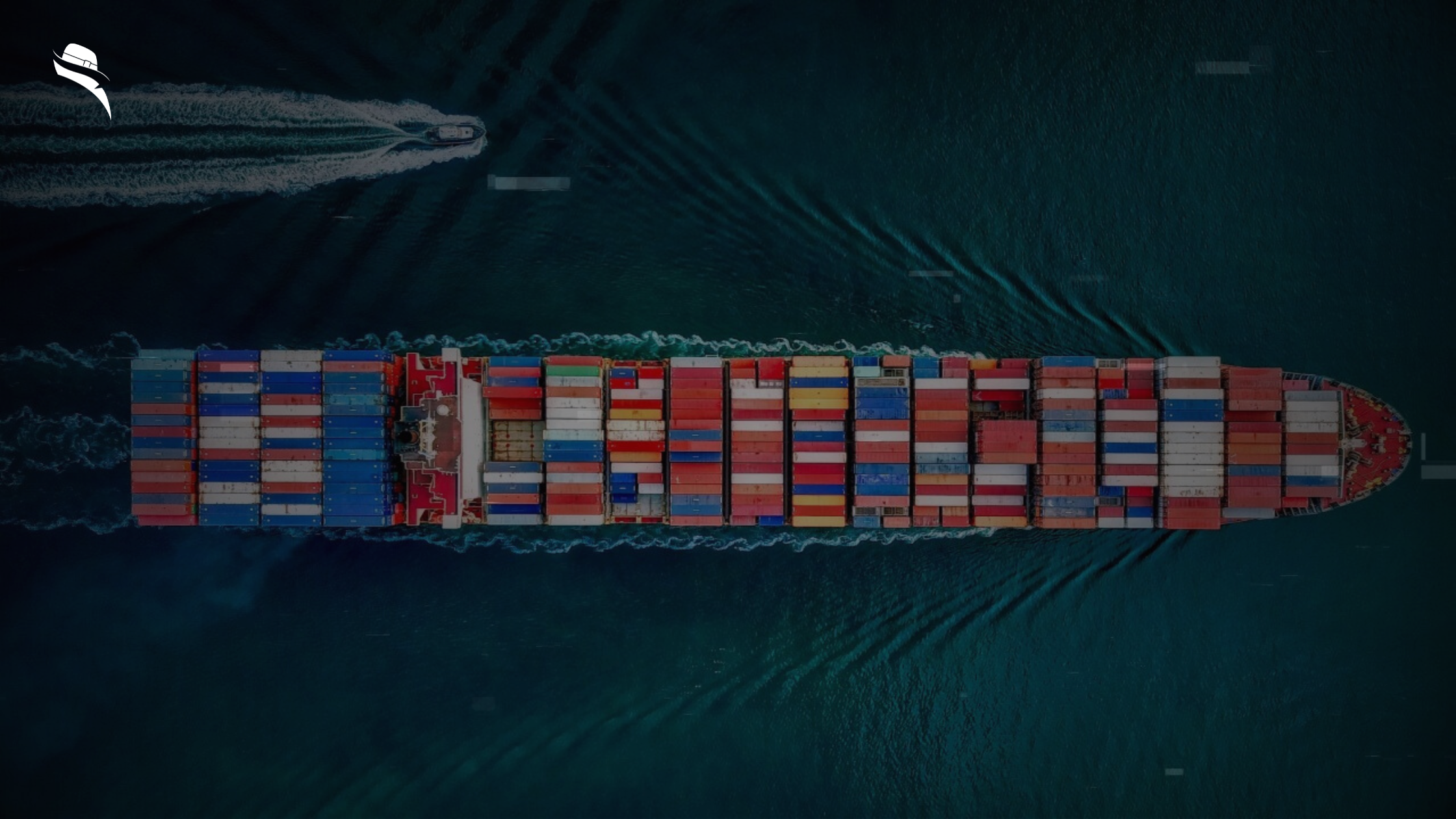The Red Sea importance cannot be overstated as this crucial waterway facilitates nearly 12% of global trade, 30% of container traffic, and almost 10% of seaborne oil shipments annually. When I analyse the current crisis unfolding in this region, I see a perfect storm of geopolitical tensions threatening one of the world’s most vital maritime arteries. The Houthi forces have already carried out dozens of attacks on international vessels, including 24 maritime drone operations between January 2017 and June 2021.
As we look ahead to 2025, the Red Sea trade route faces unprecedented challenges that will significantly impact global commerce. The Bab el-Mandeb Strait, a critical chokepoint only 14 nautical miles wide at its narrowest point, has become increasingly vulnerable. Consequently, many shipping companies are now rerouting through the Cape of Good Hope, extending travel times by 10 to 30 days and increasing fuel costs. In this comprehensive analysis, we’ll examine the Red Sea strategic importance, explore the multifaceted crisis that’s disrupting approximately 12% of global trade, and assess how these developments will reshape international commerce in the coming year.
The Red Sea’s Strategic Importance in Global Trade
At the crossroads of three continents, the Red Sea forms a maritime bridge connecting Europe, Asia, and Africa. This narrow body of water, stretching over 1,200 miles, serves as the backbone of international shipping and global commerce.
Why is the Red Sea so important?
The Red Sea’s strategic value stems primarily from its position as a shortcut between East and West. Without this crucial waterway, vessels would need to circumnavigate the entire African continent – a journey that adds thousands of miles and weeks of travel time.
Furthermore, this sea lane handles an extraordinary volume of global commerce. The Red Sea route serves as a critical passageway for energy resources, with approximately 8% of global liquefied natural gas (LNG) trade and roughly 4.8 million barrels of crude oil transported daily through these waters.
Historically, this waterway has been essential since ancient times. Today, it connects the Mediterranean Sea to the Indian Ocean, making it a vital artery for international commerce. The Red Sea’s importance extends beyond pure economics – it represents a strategic military positioning point, with naval bases dotting its coastline.
Key chokepoints: Bab el-Mandeb and Suez Canal
Two critical bottlenecks define the Red Sea’s strategic value. At the southern entrance lies the Bab el-Mandeb Strait – a mere 14 nautical miles wide at its narrowest point. This narrow passage is particularly vulnerable, as disruption here can completely sever the connection between the Red Sea and the Gulf of Aden.
On the northern end stands the iconic Suez Canal, an artificial waterway cutting through Egypt. Before the Suez Canal’s completion in 1869, ships had to sail around Africa’s Cape of Good Hope. Today, this engineering marvel reduces the sea voyage between Europe and Asia by approximately 6,000 miles.
Indeed, these chokepoints represent potential vulnerabilities in global trade. Any disruption at either point creates immediate ripple effects throughout the global economy, forcing vessels to take significantly longer alternative routes.
Red Sea trade route and its global role
The Red Sea corridor serves as a critical component in global supply chains. More than 19,000 ships transit through the Suez Canal annually, carrying everything from consumer electronics to vehicles and agricultural products.
This maritime route is particularly essential for:
- European-Asian trade flows, especially for time-sensitive goods
- Energy exports from Gulf states to European and Asian markets
- Container shipping between manufacturing hubs in Asia and consumer markets in Europe
Despite alternative options like the Cape of Good Hope route, the Red Sea passage remains irreplaceable due to its time and fuel efficiency. This efficiency translates directly to lower consumer prices and faster delivery times for goods worldwide. Above all, the Red Sea’s role in global trade represents the interconnectedness of our modern economy, where disruption in one waterway affects consumers and businesses across continents.
Geopolitical Flashpoints Driving the Crisis
Three major flashpoints have intensified the Red Sea crisis in 2025, threatening regional stability and maritime commerce.
Houthi attacks and the Yemen conflict
The Iran-backed Houthi movement has transformed the Red Sea into a maritime battlefield. Initially targeting Israeli vessels after the October 2023 Hamas-Israel conflict, the Houthis have subsequently expanded their attacks to any ship they perceive as connected to Israel, the US, or the UK. Throughout 2024, they launched approximately 500 attacks, striking more than 100 ships using drones, missiles, and armed speedboats.
In response, the US and UK conducted 931 airstrikes between January 2024 and January 2025, while establishing Operation Prosperity Guardian—a multinational naval mission to secure Red Sea trade routes. Nevertheless, these efforts have largely failed to deter the attacks, resulting in dramatic shipping route changes. Despite a brief respite during occasional ceasefires, shipping through the Suez Canal has fallen by roughly 50%.
Ethiopia-Somaliland deal and Somalia’s response
Another pivotal development occurred in January 2024 when Ethiopia, the world’s most populous landlocked nation with 120 million people, signed a memorandum of understanding with Somaliland. This agreement granted Ethiopia access to 20 kilometres of coastline for 50 years and permission to establish a naval base near Berbera. In exchange, Ethiopia would become the first country to recognise Somaliland’s independence.
Somalia immediately condemned this as “a blatant assault on its sovereignty”, expelled Ethiopia’s ambassador, and lodged complaints with the UN Security Council. This dispute has created new regional alliances, with Egypt, Saudi Arabia, and Eritrea supporting Somalia, while the UAE backs Ethiopia.
Turkey’s growing role in Somali waters
Meanwhile, Turkey has emerged as a significant player through a February 2024 defence agreement with Somalia. This 10-year cooperation framework authorises Turkey to train and equip Somalia’s naval forces and patrol its 3,333km coastline. Additionally, Turkey gained rights to explore oil and gas within Somalia’s territorial waters.
The Turkish parliament subsequently approved a two-year deployment of troops in Somali waters. Although officials maintain this arrangement is unrelated to the Ethiopia-Somaliland deal, the timing suggests otherwise, as Turkey’s presence helps counterbalance Ethiopia’s maritime ambitions.
Global Powers and Military Presence in the Region
The military dimension of the Red Sea has intensified as global powers establish bases and assert influence along this strategic corridor. Major powers have transformed this vital waterway into a theater of geopolitical competition, with profound implications for the red sea strategic importance in world affairs.
US and China’s strategic rivalry in Djibouti
Djibouti, a small nation commanding key geography at the southern entrance to the Red Sea, hosts both American and Chinese military bases merely six miles apart. This unprecedented proximity has thrust the little-known African port nation into the spotlight of great power competition. China established its first-ever overseas military base here in 2017, breaking its long-standing policy against foreign troop deployments. Moreover, Chinese loans now hold approximately 70% of Djibouti’s gross domestic product in debt, raising concerns about potential “debt trap” diplomacy. The Chinese facility enables intelligence gathering, including possible eavesdropping on Western military communications, creating a strategic challenge for the United States, which has operated Camp Lemonnier for nearly two decades.
Russia’s Naval Ambitions in Sudan
Currently, Moscow is pursuing a naval facility on Sudan’s Red Sea coast, with an agreement finalised in February 2025. This Russian “logistical base” would accommodate up to four naval vessels, including nuclear-powered ships, with approximately 300 personnel. However, the project faces serious obstacles after drone attacks reportedly carried out by Sudan’s Rapid Support Forces severely damaged the proposed site at Flamingo Bay. If completed, this base would give Russia direct access to a waterway that carries 10-12% of global trade, enhancing its ability to project power across North Africa, the Arabian Peninsula, and East Africa.
Saudi Arabia, the UAE, and Egypt’s regional influence
The de facto alliance of Egypt, Saudi Arabia, and the United Arab Emirates has exerted significant influence over Red Sea developments for the past decade. These nations initially coordinated their security policies to thwart democratic efforts, counter political Islam, and oppose Iranian and Turkish regional influence. In contrast to global powers, the UAE has emerged as a significant regional player, establishing bases in Eritrea, Berbera (Somaliland), and on Yemen’s Socotra island. Ultimately, Egypt’s reliance on the Suez Canal has positioned it as a pivotal regional power, though increasing Red Sea competition threatens this influence.
How the Crisis Disrupts Global Trade
The ongoing attacks in the Red Sea have caused unprecedented disruptions to global maritime commerce, forcing a fundamental realignment of shipping patterns and costs.
Rerouting of vessels and longer shipping times
The Bab el-Mandeb Strait has experienced a dramatic 50% reduction in traffic during the first eight months of 2024. Ships rerouting around Africa’s Cape of Good Hope face journeys extended by approximately 3,500 nautical miles (6,482 km) and increased shipping times of at least 14 days. Container transit times from China to Europe have been extended by a median of 10-14 days. For LNG carriers, the difference is stark—it takes about 16 days to sail from Qatar to Zeebrugge via the Suez Canal compared to about 27 days via the Cape.
Rising insurance and freight costs
War risk insurance premiums have skyrocketed from 0.07% of a ship’s value to as high as 2%, with some underwriters now refusing to provide coverage entirely. Consequently, global container shipping freight rates increased by approximately 130% between November 2023 and March 2024. Routes from Asia to Europe have been particularly affected, with prices climbing nearly fivefold. Even routes not directly affected have seen significant increases—shipping costs along Pacific routes rose by roughly 70%.
Impact on oil, LNG, and container shipping
Oil flows through the Bab el-Mandeb decreased to 4.0 million barrels per day in early 2024 compared with 8.7 million b/d in 2023. Likewise, LNG flows through the Suez Canal plummeted to just 4.15 million tons in 2024 from 32.36 million tons in 2023. The container shipping sector has been hit hardest, with a steep 75% decline in Red Sea transits.
Red Sea importance in global trade supply chains
These disruptions have created ripple effects throughout global supply chains. The extended delivery times act as a global reduction of shipping capacity, impacting all routes, not just those near the conflict. Industries relying on just-in-time manufacturing have already experienced halts in production. Furthermore, the OECD estimates that a 100% increase in freight rates could add 0.4 percentage points to consumer price inflation after about a year.
The Future of Red Sea Trade Beyond 2025
Looking at the evidence presented throughout this analysis, the Red Sea crisis represents far more than a regional conflict. This strategic waterway, once taken for granted as a reliable trade route, now stands at the centre of converging geopolitical storms that will reshape global commerce well beyond 2025.
Shipping companies face difficult choices ahead. They must either risk vessel safety through the Red Sea or accept significantly higher costs via alternative routes. These decisions ultimately affect consumers worldwide as increased shipping expenses translate directly to higher prices for everyday goods. Furthermore, extended delivery times disrupt just-in-time supply chains, creating shortages across multiple industries.
The military dimension adds another layer of complexity. Great power competition between the US and China, coupled with Russia’s naval ambitions, transforms this waterway into a maritime chessboard. Regional powers like Saudi Arabia, the UAE, and Egypt simultaneously vie for influence, creating an increasingly militarised environment that threatens commercial shipping.
The Houthi attacks highlight how non-state actors can significantly disrupt global trade patterns. Their persistent targeting of vessels has effectively closed one of the world’s most vital maritime corridors, demonstrating the vulnerability of our interconnected economy. Nevertheless, this disruption also accelerates the development of alternative shipping routes and contingency planning across global supply chains.
Countries dependent on Red Sea trade must now rethink their economic security. Japan, South Korea, and European nations face particularly acute challenges as their energy supplies and export markets require reliable maritime connections. Accordingly, we should expect greater investment in supply chain resilience and route diversification strategies moving forward.
The Red Sea crisis serves as a stark reminder of how geopolitical tensions directly impact economic stability. Though shipping routes may eventually normalise, the fundamental security concerns will likely persist. Undoubtedly, businesses must adapt to this new reality by building more flexible supply chains capable of withstanding regional disruptions.
This crisis ultimately reveals the fragility of our global trading system. What happens in seemingly distant waters affects food prices in Europe, manufacturing in Asia, and energy security worldwide. The Red Sea’s strategic importance thus extends far beyond its geographic boundaries, touching virtually every aspect of international commerce and security in our interconnected world.
FAQs
Q1. How has the Red Sea crisis affected global trade? The crisis has significantly disrupted global trade, with about 30% of worldwide container trade impacted. Many shipping companies have rerouted vessels around the Cape of Good Hope, leading to longer transit times and increased costs. This has caused ripple effects throughout global supply chains, affecting prices and availability of goods worldwide.
Q2. Why is the Red Sea so crucial for international commerce? The Red Sea is a vital maritime route connecting Europe, Asia, and Africa. It handles nearly 12% of global trade, 30% of container traffic, and almost 10% of seaborne oil shipments annually. The Suez Canal at its northern end reduces the sea voyage between Europe and Asia by about 6,000 miles, making it essential for efficient global trade.
Q3. What are the main geopolitical issues driving the Red Sea crisis? The crisis is fueled by multiple factors, including Houthi attacks on vessels, the Ethiopia-Somaliland deal causing tensions with Somalia, and Turkey’s growing military presence in Somali waters. Additionally, global powers like the US, China, and Russia are competing for influence in the region, further complicating the situation.
Q4. How are shipping costs and times affected by the Red Sea crisis? Shipping costs have increased dramatically, with global container freight rates rising by about 130% between November 2023 and March 2024. Ships rerouting around Africa face extended journeys of at least 14 days. Insurance premiums have also skyrocketed, with war risk premiums increasing from 0.07% to as high as 2% of a ship’s value.
Q5. What are the long-term implications of the Red Sea crisis for global trade? The crisis is likely to lead to a restructuring of global supply chains, with businesses seeking more resilient and flexible alternatives. Countries dependent on Red Sea trade may invest in route diversification and contingency planning. The situation also highlights the vulnerability of key maritime chokepoints and may prompt increased international cooperation to secure vital trade routes.







2 Comments